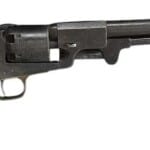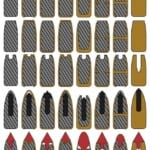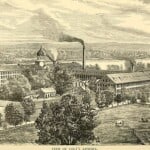
Introduction to the Hawken Rifle
Born from the skilled hands of the illustrious Hawken brothers, Samuel and Jacob, the Hawken rifle emerged as a groundbreaking example of firearms engineering during the early 19th century. The brothers, natives of Hagerstown, Maryland, began their professional journeys as apprentices in the gunsmith trade. Upon honing their skills, the duo ventured westward to establish their gunsmith shop in St. Louis, Missouri, in 1815. The burgeoning settlement provided an excellent location, serving as the launching point for the fur trade and westward expansion.
Development and Production
The Hawken shop began to produce the now-famous Hawken rifle around 1823, which would in time become an iconic symbol of the American frontier. The Hawken brothers sought to improve upon the long, cumbersome, and relatively lightweight Kentucky rifles of the day, optimizing for greater performance in the rugged landscapes of the West.
Renowned for its unique construction, the Hawken rifle, sometimes referred to as a "plains" or "mountain" rifle, boasted a shorter, more substantial barrel than its contemporaries. Measuring around 30 to 36 inches long, the rifle was a manageable yet robust weapon that weighed in at approximately 10 to 15 pounds. The Hawken was a flintlock muzzleloader, loaded from the front end of the barrel, though later models were made as percussion cap rifles.
The caliber of a typical Hawken rifle ranged from .50 to .54 and some in .58, although larger calibers up to .69 were occasionally crafted for bear hunting. Such a caliber was capable of handling heavier rounds, which were particularly desirable when hunting the larger game prevalent in the western territories. Notably, the rifles fired patched round balls or conical bullets, delivering commendable accuracy at a reasonable distance, making it a favored choice among the mountain men and trappers of the era.
The production process of the Hawken rifles was a meticulous affair, a testament to the artistry and precision of its creators. Each rifle was hand-crafted, starting from a block of curly maple that would be carved into the stock, to the careful forging and rifling of the barrel. Such detail and craftsmanship resulted in rifles that were not only functional but also boasted a distinctive aesthetic, their brass and steel fixtures gleaming against the polished maple.
Production of these rifles remained a relatively low-volume affair, owing to their bespoke nature. An estimated 300 to 400 rifles were produced annually at the peak of the Hawken shop's operation, with total production probably numbering fewer than 10,000 rifles. It was a testament to the brothers' dedication to quality over quantity, a principle that won them the patronage of some of the most legendary figures of the era, including explorers like Kit Carson and Jim Bridger.
Usage
The Hawken rifle found widespread use in the American West, particularly in the Rocky Mountains. Its association with the fur trade was pivotal. Fur trappers, needing a robust and accurate firearm to defend themselves and hunt game, found the Hawken rifle an excellent companion. Furthermore, as westward expansion progressed, the rifle became popular among settlers and gold seekers traveling the Oregon and California trails, serving as a crucial tool for survival.
But the Hawken rifle was more than a simple tool; it was a symbol of a nation on the move, a testament to the pioneering spirit that defined an era. The combination of craftsmanship, durability, and reliability resulted in a firearm that not only served its purpose but also left an indelible mark on the history of American firearms and the broader narrative of the American West.
Legacy
By the time of Jacob Hawken's death in 1849, and subsequently when the shop finally closed its doors in 1915, the Hawken rifle had cemented its status as a legend of American gunsmithing, a symbol of a bygone era. Even today, it is prized among collectors and history enthusiasts, a tangible piece of the nation's intrepid past.
The Hawken rifle's impact on the frontier's narrative and the course of firearms technology cannot be understated. It was the steel and maple embodiment of a particular moment in American history, marking the era of westward expansion and the daring spirit of those who blazed the trail.
Read more about this here:

Join discussions on this and other weapons of the era at forums here.
If you know of any forums or sites that should be referenced on this listing, please let us know here.



